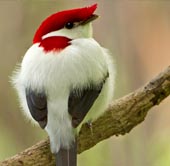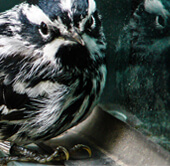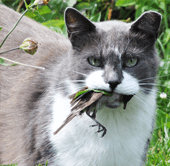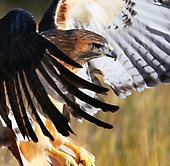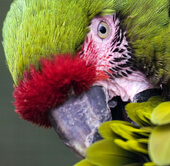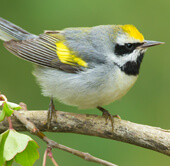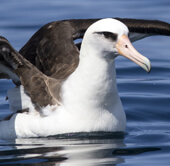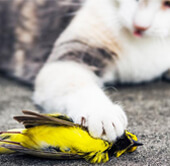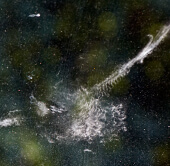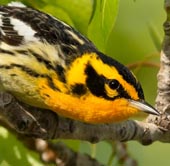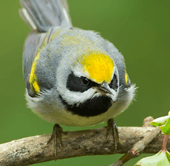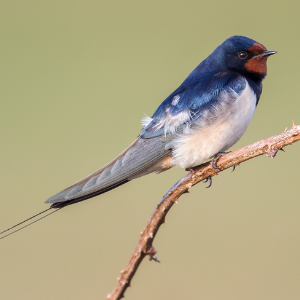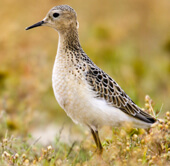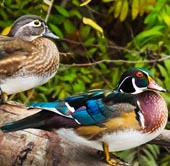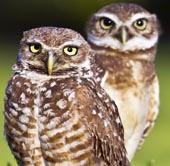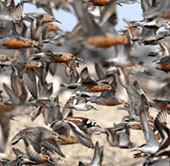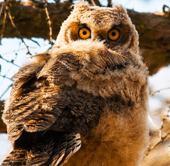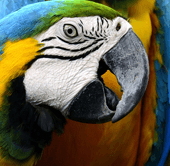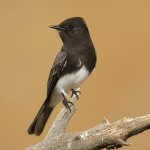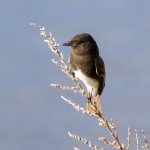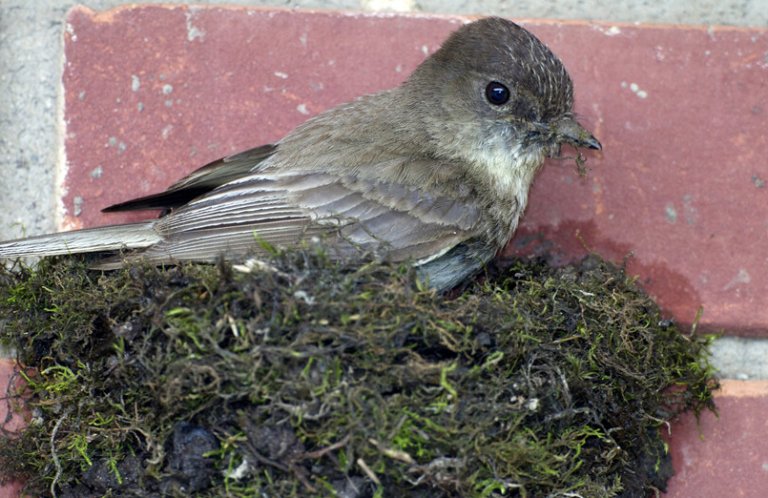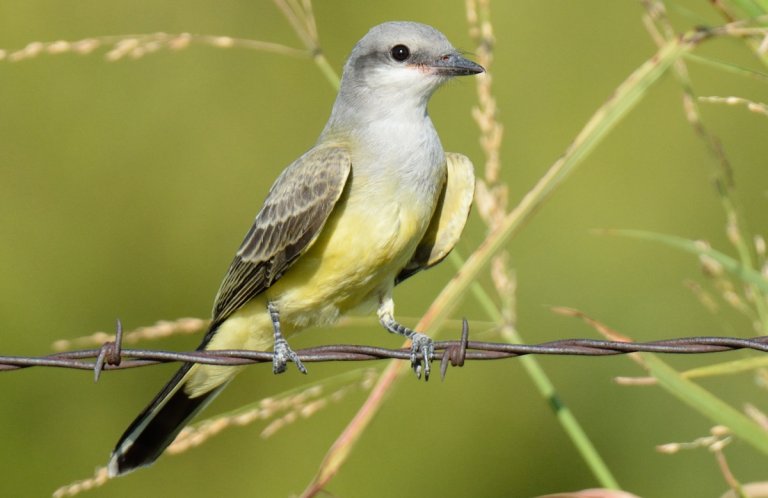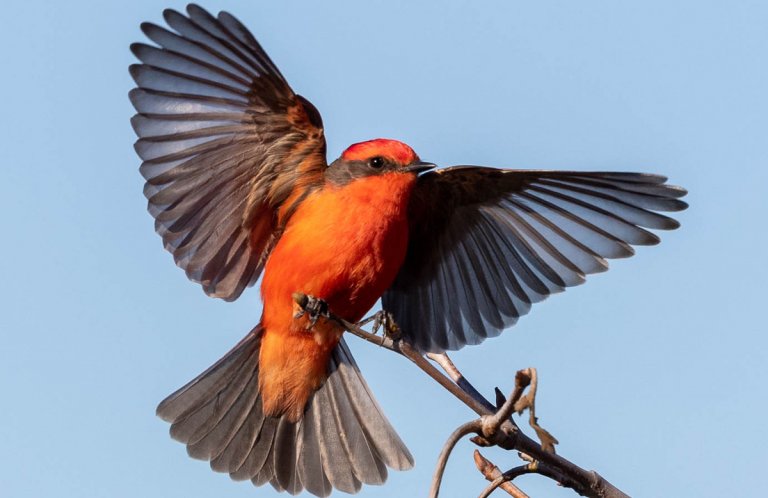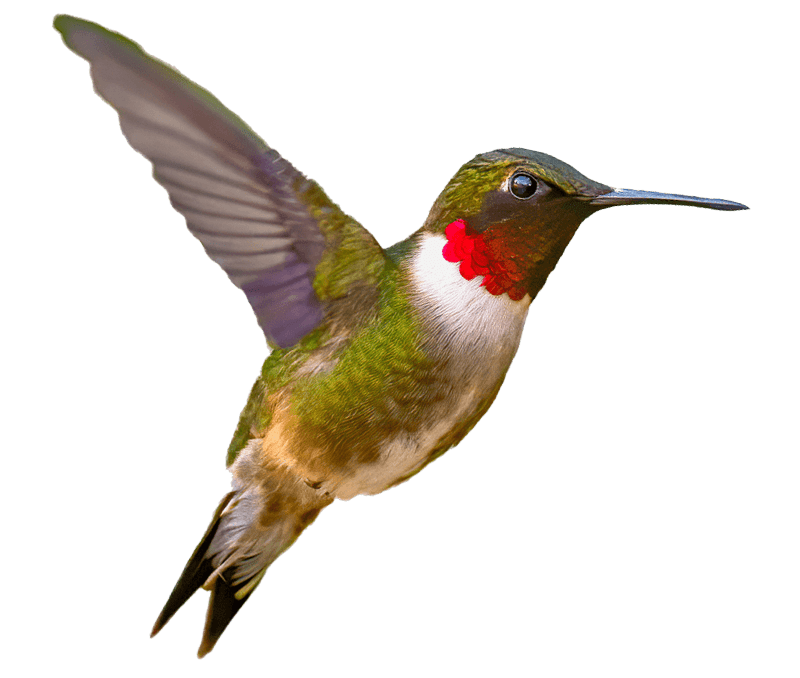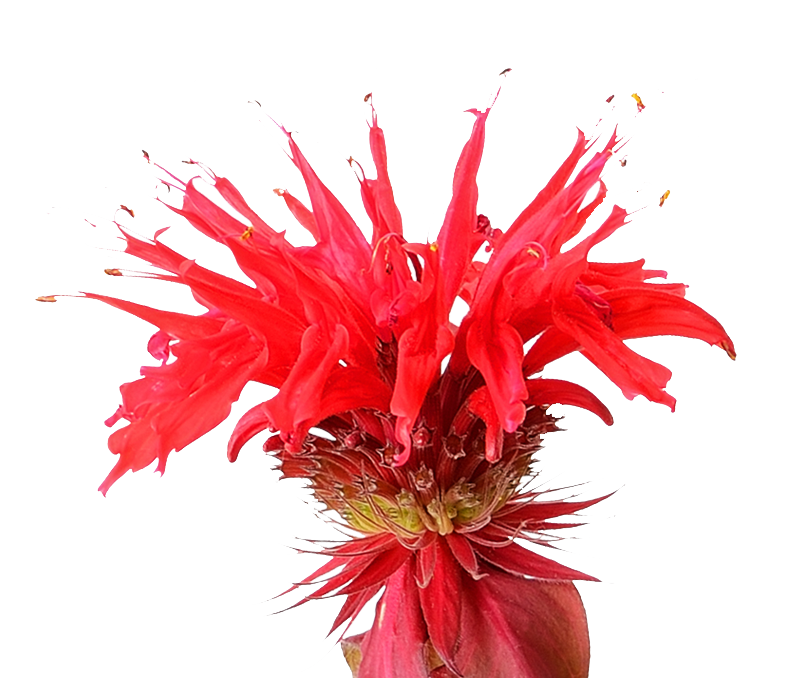About
The handsome little Black Phoebe is a common and conspicuous flycatcher of the western Americas, typically seen near the water, singly or in pairs. Like its close relative, the Eastern Phoebe, it perches in an erect posture and frequently pumps its tail in an up-and-down motion.
The Black Phoebe is a dapper-looking bird, with a simple yet crisp color scheme of matte-black upperparts, breast, and sides contrasting sharply with a white belly and undertail. The bill, legs, and feet are black. Sexes look alike, and juveniles resemble adults, but show rufous edging on the wing feathers and body plumage.
Six subspecies of Black Phoebe are recognized, with birds showing a decreasing amount of white on the belly from the northernmost populations through western Panama. The two subspecies found from eastern Panama into South America (sometimes called the “White-winged” Black Phoebe) show increasing amounts of white edging on the wings and tail feathers, as well as a larger body size.
Black Phoebes associate closely with water, whether it be slow-flowing streams, rushing rapids, ephemeral or permanent ponds, ocean and lake shores, irrigation ditches, or even water tanks.
The Black Phoebe belongs to the largest bird family in the Americas, the Tyrannidae, or tyrant flycatchers. These feisty and seemingly fearless flycatchers are known for their aggressive defense of territory and young. The family includes species ranging from the doughty Western Kingbird to the tiny Many-colored Rush-Tyrant of South America.
Songs and Sounds
A male Black Phoebe sings a series of repeated tee-hee tee-hoo notes to defend his territory and attract a mate. Both sexes give softer tsip calls throughout the year. Like many flycatcher species, such as the Western Kingbird and Great Crested Flycatcher, the Black Phoebe will respond to threats by audibly snapping its bill together.
Song:
Song:
Tsip calls:
Breeding and Feeding
Although chiefly an insectivore, the Black Phoebe will sometimes snatch minnows from the water's surface as it forages, and may even feed them to their young! Like their counterpart in the eastern U.S., the Eastern Phoebe, the Black Phoebe is conspicuous, calling loudly and often from easy-to-glimpse perches.
The Black Phoebe feeds on a wide variety of insects and arthropods, including bees, wasps, flies, beetles, bugs, grasshoppers, damselflies, dragonflies, termites, and spiders. It may sometimes eat small berries.
It forages in open areas, sallying out from perches near the ground to hawk prey from the air, or gleaning food from the ground or the water's surface. The Black Phoebe usually feeds during the day, but may sometimes hunt insects attracted to electric lights in the evening.
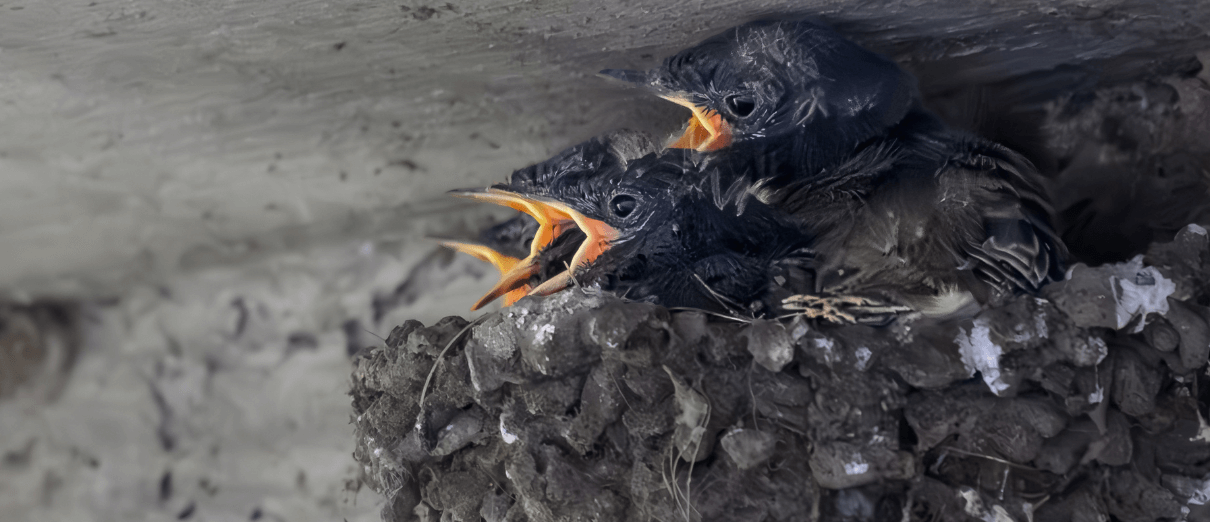
The male Black Phoebe courts potential mates through aerial displays. After approaching a likely female, he fans his tail, flutters his wings, and calls in a soft chatter, then launches straight upward in a zig-zag or spiral pattern. He descends to the treetops, still calling, and may proceed to a nest site showing display, where he further entices a female by hovering in front of a series of likely nest sites. The female Black Phoebe ultimately accepts a mate and makes the final selection of nest site. Black Phoebes are monogamous and may stay together for up to five years. Pairs often reuse the same nest site and nest in successive years.
The female Black Phoebe chooses a sheltered nest site against a wall under a protective overhang, culvert, bridge, river bank, or broken-off tree limb. She builds a semi-circular nest of mud lined with plant fibers, adhering it to a vertical surface with globs of mud. The nest is typically placed near or over the water. Nest building or refurbishment usually takes from one to three weeks.
The female Black Phoebe lays a clutch of one to six glossy white eggs (the average clutch size is four). Food availability determines the final clutch size. The female does most of the incubation, although the male may assist. After the young hatch, both parents provide them with insect food. The hatchlings grow quickly and are ready to leave the nest after 18 to 21 days. Black Phoebes frequently raise two or even three broods during a breeding season.
Region and Range
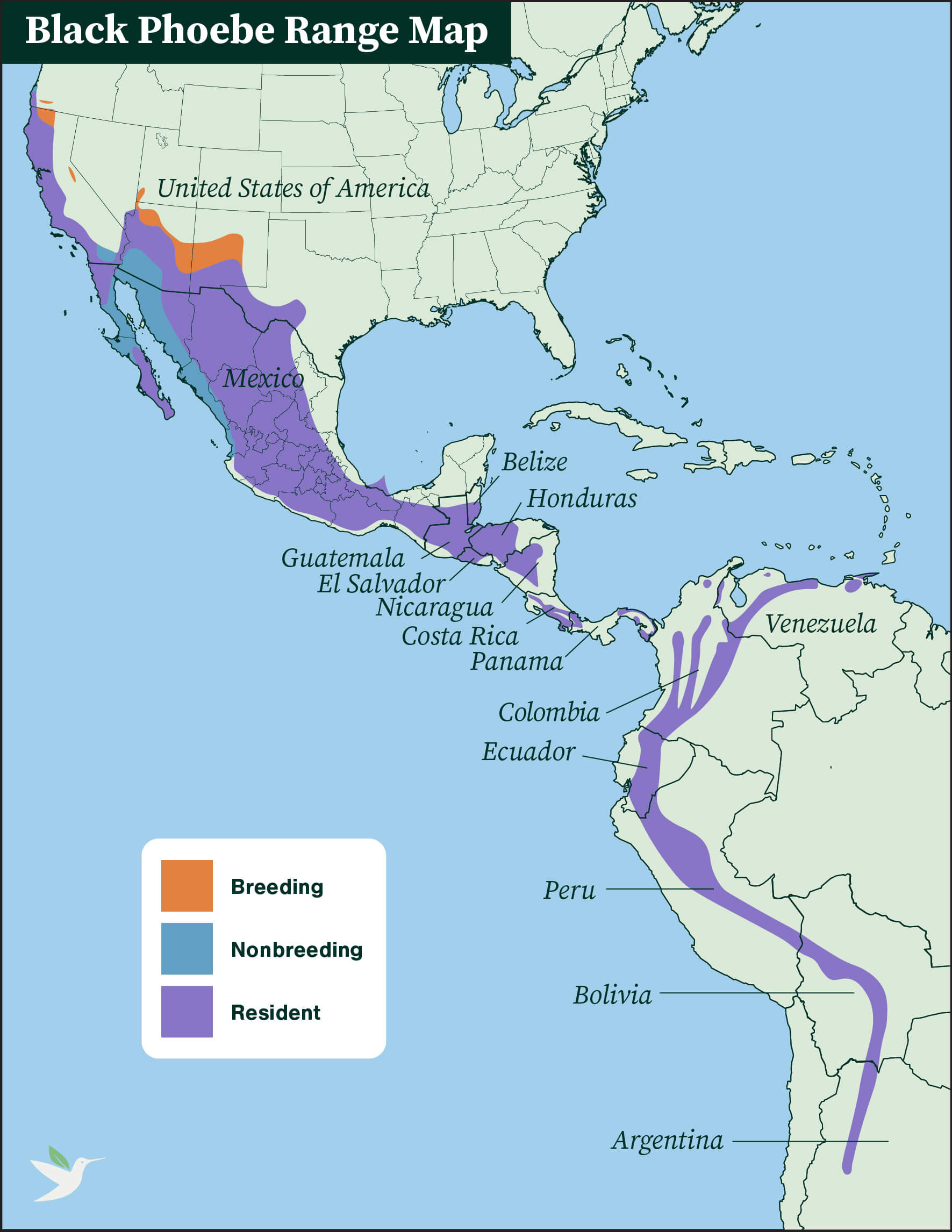
In the United States, the Black Phoebe can be found near a variety of watery landscape features in Oregon, California, Arizona, New Mexico, and Texas. It is resident in Mexico, Central America, and the northern and western countries of South America, from Venezuela to Argentina. This bird readily takes to the presence of humans and often nests in and on human-made structures.
Breeding populations of Black Phoebe within the U.S. migrate short distances to the southwestern states and Mexico, where they stay for the nonbreeding season. Most populations of this bird are nonmigratory. U.S. populations are expanding their range northwards.
Conservation of the Black Phoebe
The continued destruction of riparian habitat and unsustainable water use practices represent a one-two punch for the Black Phoebe, reducing suitable habitat available for both breeding and foraging.
The widespread use of pesticides can reduce insect populations, which are a primary food source for the Black Phoebe. Besides reducing insect-prey availability outright, pesticides can also accumulate in birds' bodies and may lead to egg and nestling mortality.
Like many birds, the Black Phoebe is susceptible to the impacts of climate change, which can include more frequent flooding, increasing temperatures and drought, and more intense wildfires, all of which reduce habitat availability.
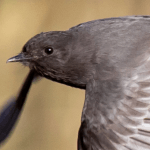
Help support ABC's conservation mission!
ABC's BirdScapes program cooperates with partners in the Rio Grande Joint Venture and California Central Coast Joint Venture to protect and restore habitat for the phoebe's southwestern riparian areas. These conservation measures create and protect habitat for the Black Phoebe and other bird species, such as the Bell's Vireo and the Threatened western Yellow-billed Cuckoo.
ABC provides resources to its members and the public to reduce home pesticide use and promote a more bird-friendly life. In addition, we work with partners at the state and federal levels in the U.S. to call for the regulation or cancellation of the pesticides and toxins most harmful to birds.
ABC urges its members to join them in advocating for policies that strengthen laws to protect birds at the federal level, as well as empower communities to enact additional bird conservation measures locally.
Get Involved
Policies enacted by the U.S. Congress and federal agencies, such as the U.S. Fish and Wildlife Service, have a huge impact on migratory birds. You can help shape these rules for the better by telling lawmakers to prioritize birds, bird habitat, and bird-friendly measures. To get started, visit ABC's Action Center.
Living a bird-friendly life can have an immediate impact on migratory birds in the United States. Doing so can be as easy as adding native plants to your garden, avoiding pesticides, and keeping cats indoors. To learn more, visit our Bird-Friendly Life page.
American Bird Conservancy and our Migratory Bird Joint Venture partners have improved conservation management on more than 8.5 million acres of U.S. bird habitat — an area larger than the state of Maryland — over the last ten years. That's not all: With the help of international partners, we've established a network of more than 100 areas of priority bird habitat across the Americas, helping to ensure that birds' needs are met during all stages of their lifecycles. These are monumental undertakings, requiring the support of many, and you can help by making a gift today.

